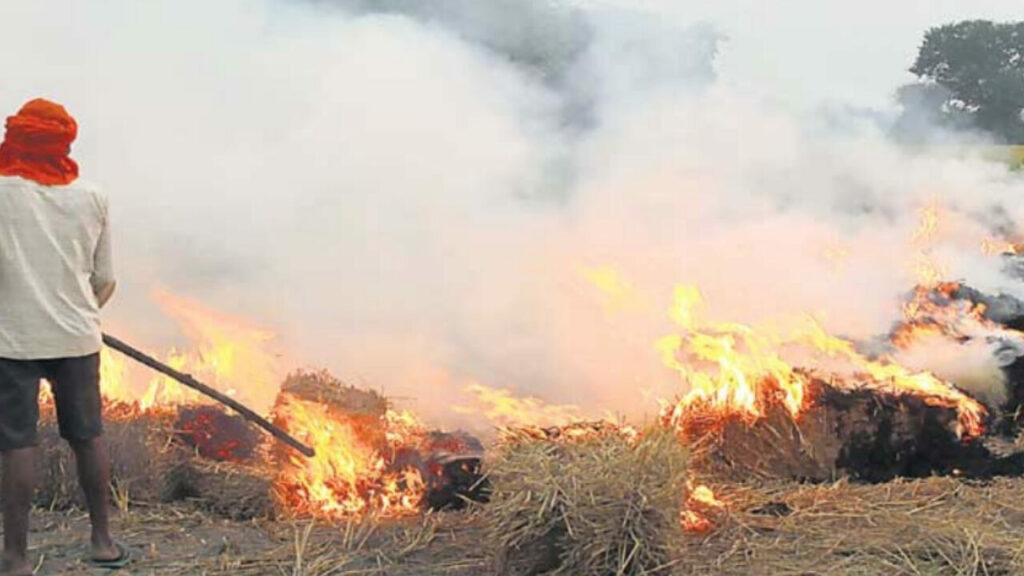As per the ‘World Air Quality Report’ released by Swiss firm IQAir, India is world’s eighth most polluted country in 2022 on the basis of PM 2.5 level. The same was fifth last year and though this year the PM 2.5(a pollutant closely tracked by scientists and health experts) level has dipped to 53.3 micrograms/cubic metre, still it is alarming as it is still over 10 times the World Health Organisation’s safe limit.

This data from over 30,000 ground-based monitors, either government or non-government operated has been taken for 131 countries.
India, with its 7300 cities in the list, dominates the list. The same was 2200 in 2017.
The economic cost of air pollution in India at $150 billion as per the report. The report also says that 20-35 per cent of the PM 2.5 pollution comes from the transportation sector, while other sources include industrial units, coal-fired power plants and biomass burning.
The two most polluted cities in the world are Pakistan’s Lahore and China’s Hotan.
They are followed by Rajasthan’s Bhiwadi and Delhi. With a PM 2.5 level of 92.6 micrograms, India’s Capital’s level is almost 20 times the safe limit.
Indian Domination in the Most Polluted List
The Top 10 has 6 Indian cities, top 20 has 14, top 50 has 39 and top 100 has a massive 65 Indian cities. The same number was 61 last year.
Delhi and New Delhi are both in the top 10, based on a new classification but Delhi is no longer the most polluted capital in the world as it has been dethroned by Chad’s N’Djamena.
This is due to the fact that report has made a distinction between ‘greater’ Delhi and New Delhi the capital, however both are in the top 10 list.
A stark revelation between the two is the difference in pollution levels is a miniscule 0.6 micrograms of PM 2.5. Also worth noting is that N’Djamena’s population is less than a million while New Delhi’s population is over four million.
Though Delhi seems to have hardly seen a dip of 8% than last year, its neighbours Gurugram, Noida, Ghaziabad and Faridabad have seen a decline in pollution levels – from 34 per cent in Gurugram to 21 per cent in Faridabad as compared to last year.
At such chronically high levels of pollution, those most at risk include children as their lungs are still developing, the elderly, and the unwell, especially those with asthma, cancer and diabetes among other diseases.
The decline in the PM 2.5 level cannot be seen as an improvement as the air remains hazardous and the health risks remain high. This entire belt – a mega city – has a population of millions, with estimates varying from 38-42 million.
Agra has seen a massive drop of 55% in the PM 2.5 level as in between 2017-21 was 85 micrograms and in 2022 this was just 38 micrograms per cubic metre.
31 cities have seen a double-digit percentage decline in pollution levels whereas 38 cities and towns have seen a rise in pollution compared to an average of previous years.
Interestingly, as many as 31 cities have seen a double-digit percentage decline in pollution levels. Of these, 10 are in Uttar Pradesh and seven in Haryana.
After Delhi, Kolkata is the most polluted metro, however with a wide margin. Chennai, apparently is the cleanest with pollution ‘just’ 5x the WHO’s safe level.
In fact, the only metros where pollution levels saw an uptick over the average since 2017 are Hyderabad and Bengaluru.
What Can be the Solution to South Asian Problem
Out of the top 100 cities in the world, 72 most polluted belong to South Asia.Even though almost all these cities are in India, Pakistan and Bangladesh rank higher in the list of the ten most polluted countries. But air pollution is a common problem with these countries sharing ‘air sheds’, i.e.. pollutants from one area moving to another.
The World Bank, after calling South Asia the epicenter of air pollution, said that the cost of cutting do be if countries did it together and also calculated the same if they did it separately.
Separately, it would cost a prohibitive $2.6 billion dollars to cut 1 microgram/cubic metre of PM 2.5.
The same would be $278 million per 1 microgram in the case all decide to work together.













